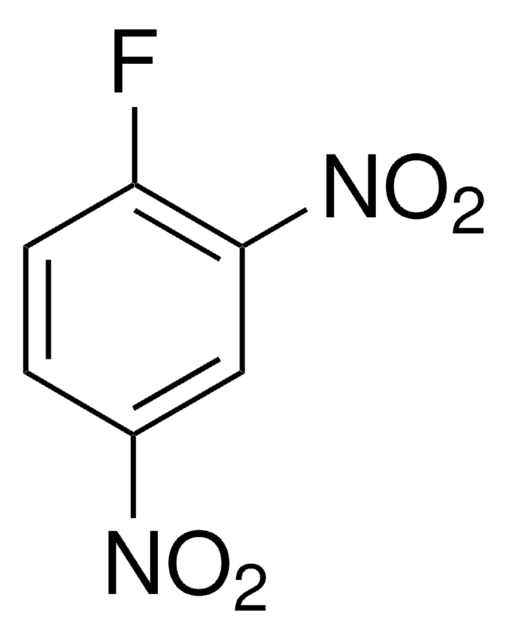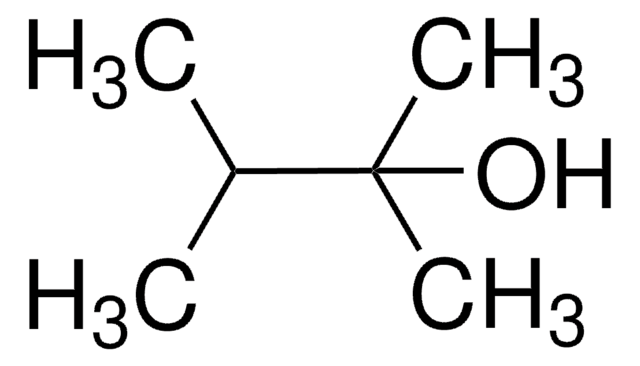8.02809
2-Chloropropane
for synthesis
Synonim(y):
2-Chloropropane, Isopropyl chloride
About This Item
Polecane produkty
ciśnienie pary
592.1 hPa ( 20 °C)
Poziom jakości
Formularz
liquid
temp. samozapłonu
590 °C
siła działania
>2000 mg/kg LD50, oral (Rat)
>2000 mg/kg LD50, skin (Rabbit)
granice wybuchowości
2.8-10.7 % (v/v)
mp
-118 °C
temp. przejścia
flash point -36 °C
gęstość
0.86 g/cm3 at 20 °C
temp. przechowywania
2-30°C
ciąg SMILES
ClC(C)C
InChI
1S/C3H7Cl/c1-3(2)4/h3H,1-2H3
Klucz InChI
ULYZAYCEDJDHCC-UHFFFAOYSA-N
Zastosowanie
- Development and validation of Genotoxic Impurities Chloromethane, Chloroethane and 2-Chloropropane, in Pregabalin drug substance using Head-Space: This study focuses on the detection and quantification of 2-Chloropropane as a genotoxic impurity in pharmaceutical products using head-space gas chromatography (P Bharath, PVS Gupta, SM Ali, D Ramachandran).
- Photocatalytic breakdown of 2-chloropropane: Research on the effectiveness of a photocatalytic reactor designed for the degradation of 2-Chloropropane in environmental applications (EC Ajiduku, E Kamba, R Odoh, 2023).
- Density and speed of sound of 2-chloropropane: An exploration into the physical properties of 2-Chloropropane under various temperatures and pressures, providing valuable data for industrial and laboratory applications (VV Melent′ev, EB Postnikov, 2019).
- Theoretic studies on the kinetics and mechanism of multi-channel gas-phase unimolecular reactions of 1-chloropropane and 2-chloropropane: Theoretical analysis providing insights into the thermal decomposition pathways of 2-Chloropropane, important for understanding its stability and reactivity (V Saheb, 2014).
Hasło ostrzegawcze
Danger
Zwroty wskazujące rodzaj zagrożenia
Zwroty wskazujące środki ostrożności
Klasyfikacja zagrożeń
Acute Tox. 4 Dermal - Acute Tox. 4 Inhalation - Acute Tox. 4 Oral - Flam. Liq. 2
Kod klasy składowania
3 - Flammable liquids
Klasa zagrożenia wodnego (WGK)
WGK 1
Temperatura zapłonu (°F)
-32.8 °F
Temperatura zapłonu (°C)
-36 °C
Certyfikaty analizy (CoA)
Poszukaj Certyfikaty analizy (CoA), wpisując numer partii/serii produktów. Numery serii i partii można znaleźć na etykiecie produktu po słowach „seria” lub „partia”.
Masz już ten produkt?
Dokumenty związane z niedawno zakupionymi produktami zostały zamieszczone w Bibliotece dokumentów.
Nasz zespół naukowców ma doświadczenie we wszystkich obszarach badań, w tym w naukach przyrodniczych, materiałoznawstwie, syntezie chemicznej, chromatografii, analityce i wielu innych dziedzinach.
Skontaktuj się z zespołem ds. pomocy technicznej










